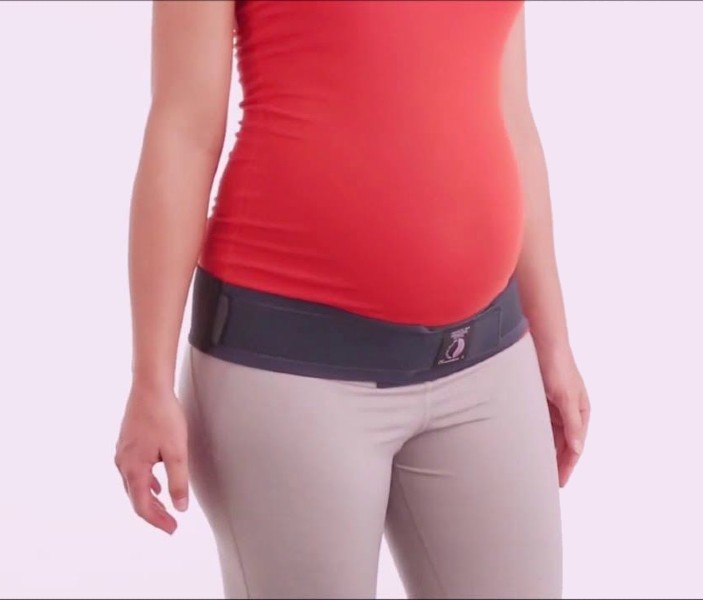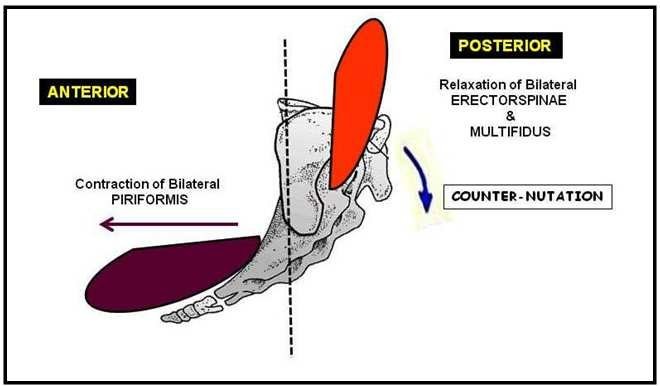Pregnancy back pain Brace
A major consideration during pregnancy is the three of the joints of the pelvis, and their associated ligaments; two sacroiliac joints and one symphysis pubis.
During pregnancy, the hormone relaxin increases considerably. It is responsible for relaxation of the ligaments. As the ligaments relax, they stretch and allow the joints to widen in preparation for the baby; this movement is called nutation.
This stretching activates nerve endings in the ligaments, which cause the counternutation muscles to tighten to support the baby’s weight and keep the pelvis stable. There is an important balance between the loosening of the ligaments, loosening of the nutation muscles, and tightening of the counternutation muscles. The more the pelvis relaxes, the more muscles respond.
Science Direct defines nutation as the movement of the sacrum between the ilia involves a nodding motion. Counternutation is the return to the neutral start position from a nutated position as well as a posterior motion of the sacral promontory.
One problem is that the tight counternutation muscles may become painful due to lack of circulation and being “on the job” almost constantly. The nutation muscles may also become painful because they become lax.
A muscular imbalance develops that may cause structural modifications such as splayed and pronated feet, anterior pelvic tilt, and flattening of the upper lumbar and thoracic spine.
In my chiropractic practice, I recommend the Serola SI Belt to ease back pain during pregnancy.
The Serola SI Belt helps by acting as an external ligament support, allowing the tight counternutation muscles to relax and helps the nutation muscles maintain ideal tightness to support the baby during pregnancy. When these muscles are strengthened in pregnancy, their function will be improved for pushing in labor.
Although relaxin may lead to joint hypermobility by softening ligaments and tendons, it also plays a role in the repair of skeletal muscle by reducing inflammation, reducing fibrosis, and increasing tissue regeneration. By maintaining proper tone in the muscles, they break down less and heal better.
Late Pregnancy
When the baby drops into the lower abdomen, the symphysis pubis becomes more involved and may become painful. Studies have shown that, at this point, it is better to lower the Serola SI Belt, from just above the trochanters, to directly on them.
Instructional video
As the due date approaches, it may be advisable to limit the use of the Serola SI Belt. It may be best to use the belt only during activity and use rest periods to let the pelvis spread into nutation in preparation for delivery. Then, apply the belt to hold the pelvis at the newly widened place for a while, especially during activity.
Serola SI Belt can help by acting as an external ligament, to keep the pelvic joints within normal range of motion.
Other benefits include:
– Reduced ligament stretching
– Reduced muscle imbalance
– Enhanced muscle repair
– Reduced cartilage wear and tear
– Reduced structural modifications
– Better posture
– Balanced pelvis
– Reduced pain
Post-Pregnancy
Although it only takes 6-8 weeks for pelvic organs to return to normal size, relaxin can stay in the body for 5 months, or more, after childbirth, so its effects on ligaments, muscles, and other tissue can remain for a long time. This is both a period of time to remain cautious and a time to align and heal your pelvic joints, ligaments, and muscles.
Exercise
Exercise can be very beneficial to the belly muscles but can also put a lot of stress on the pelvic ligaments, and further the muscle imbalance; so, it can be like two steps forward, one step back. Wearing a Serola SI Belt helps hold the joints stable, especially during exercise, thereby, removing stress from the ligaments and increasing tone to the belly muscles. So, the muscles get the maximum assistance to tighten; this can be helpful as you return to exercise in the postpartum period.
Listen to your body and discuss the use of a brace/belt and exercise regime during pregnancy with your chiropractor.
Dr. Natasha Hayden focuses on pediatric and prenatal care. Treatments of a variety of conditions are available for all individuals from birth and beyond.
Your health goals are within reach with the support of our team.



